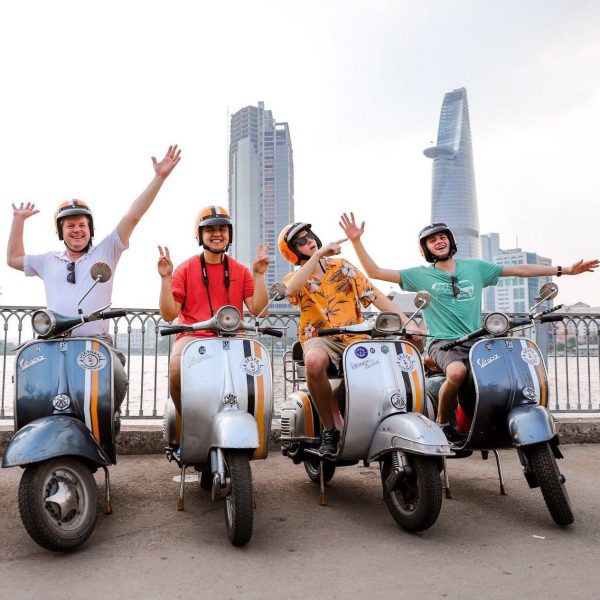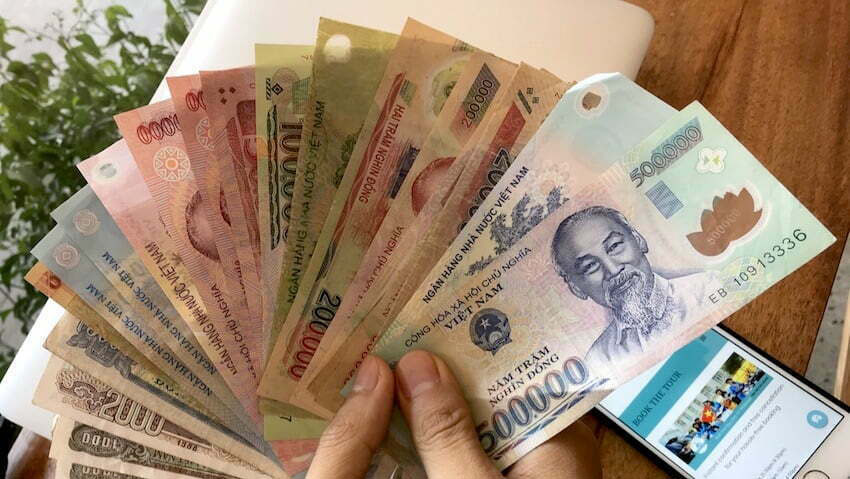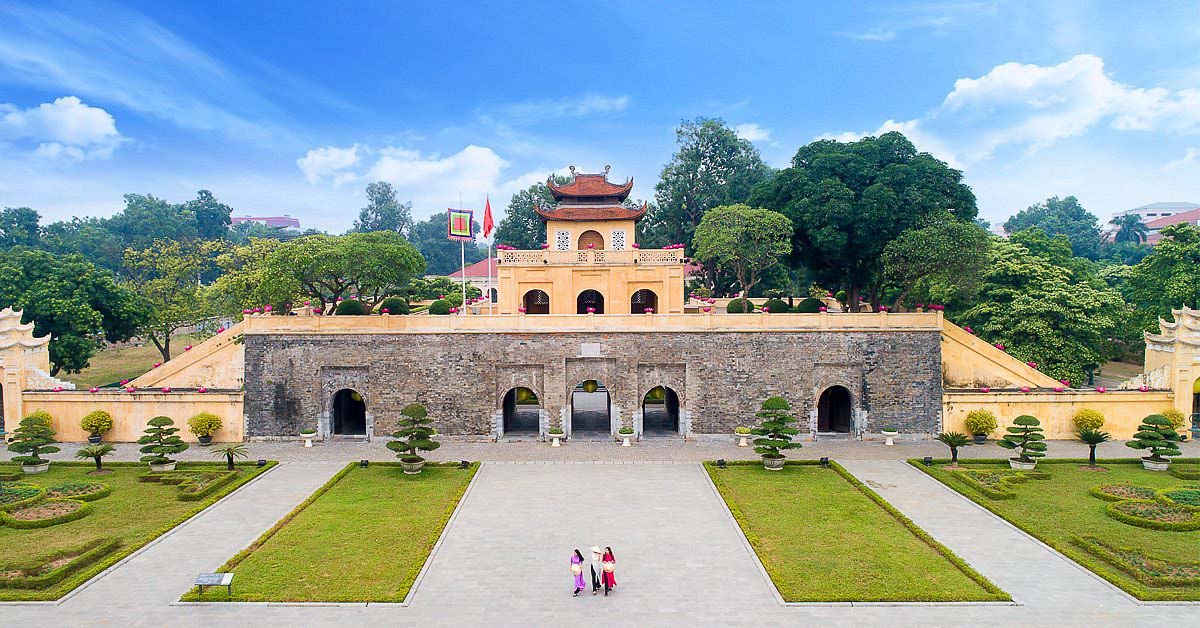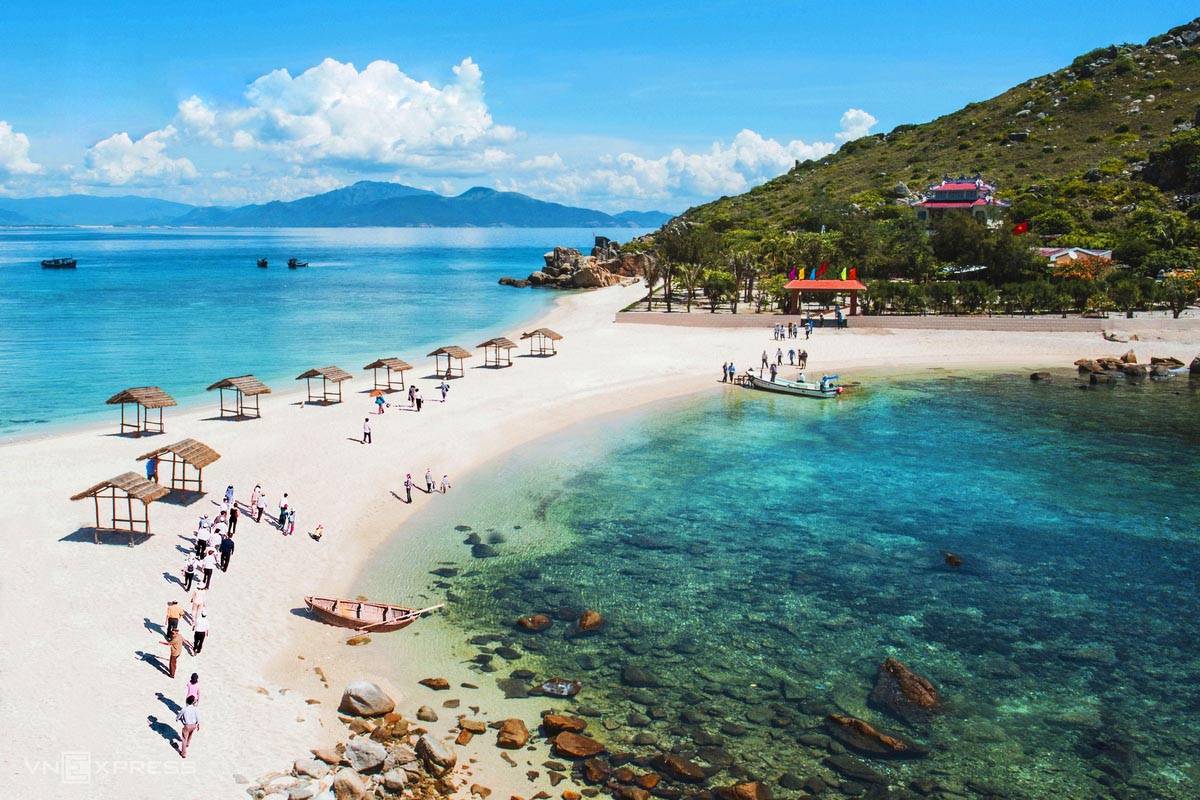Why are Vietnam rice fields so famous?
There are numerous reasons behind the fame of Vietnam's rice fields, making these landscapes a prominent feature in the country's renowned imagery:
-
Breathtaking Landscapes: The rice field scenery may seem simple, yet it exudes a tranquil and majestic aura. The beauty of rice paddies in Vietnam has been praised by many renowned international publications such as The Guardian, Conde Nast Traveler, Lonely Planet, and Wanderlust.
"Vietnam's rice fields are more than just agricultural plots; they're living, breathing landscapes that pulse with life, echoing with the chirping of birds and the rhythmic hum of rural life." - by Wanderlust.
-
Cultural Significance: The people of Vietnam have been cultivating wet rice for over 10,000 years before the Common Era. Rice is not merely the sustenance for generations of locals, it plays a crucial role in shaping a fascinating rural way of life in Vietnam.

Best rice fields in Vietnam to visit
-
Terraced Farming Techniques: When exploring Vietnam, you will encounter two types of rice fields that reveal the adaptive farming practices of the Vietnamese people. In the flat plains, the fields are neatly partitioned, while in the mountainous areas, they cascade in terraced formations.
-
Seasonal Changes: The beauty of rice fields in Vietnam encapsulates the natural transitions, evolving from water-filled paddies where buffalo plow the fields and fish thrive to lush green expanses before turning golden, signaling the time for locals to harvest the ripe grains.
-
Experienced activities: Some suggestions for you to make the most of your time and embrace the full essence of Vietnam's mesmerizing rice fields are cycling, trekking, photography, etc.
Furthermore, you can opt for homestays situated near the rice fields for a picturesque retreat and a close-up encounter with the sea of rice, and participate in agricultural tasks with the locals to gain firsthand insights into their daily life.
Best rice paddies to see in Vietnam
Rice fields are ubiquitous throughout the country of Vietnam. So, what are the highlighted places with the most spectacular rice paddies? In this section, I will introduce you to the notable names, starting from the North to the South of Vietnam.
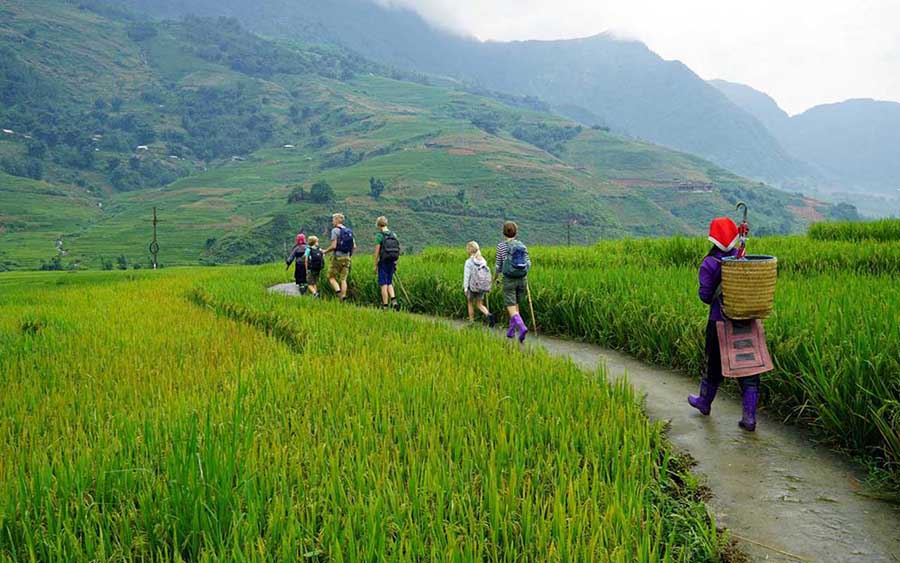
Sapa rice field
Vietnam Northwest
Vietnam’s Northwest region currently holds some of the most captivating and must-visit terraced rice fields in the country. The terrain, predominantly composed of mountains, creates enchanting vistas of rice fields nestled within picturesque valleys.
Notable names include Muong Hoa Valley (Sapa rice fields), Mu Cang Chai (Yen Bai), Hoang Su Phi (Ha Giang), Pu Luong (Thanh Hoa), and Mai Chau (Hoa Binh).
Telegraph (UK) recognized Mu Cang Chai as one of the most stunning terraced landscapes worldwide in 2018, and it has also been featured among the world’s most colorful destinations in 2023 by Conde Nast Traveler.
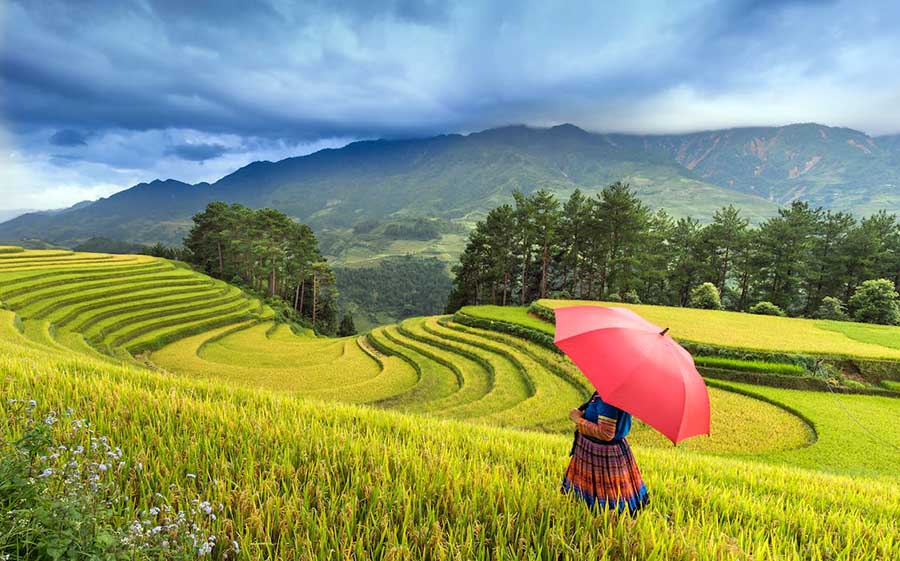
Mu Cang Chai rice field in Yen Bai
Terraced fields in the Northwest are crafted out of the necessity to cultivate rice in the high mountainous regions by the local residents. Visit rice fields here, visitors can seamlessly blend into the majestic backdrop of mountains and sky, engaging in experiential activities such as cycling, trekking, and paragliding. There is also the option to stay in local homestays that add a touch of authenticity to immerse in the vibrant indigenous culture amidst the stunning scenery.
Red River Delta
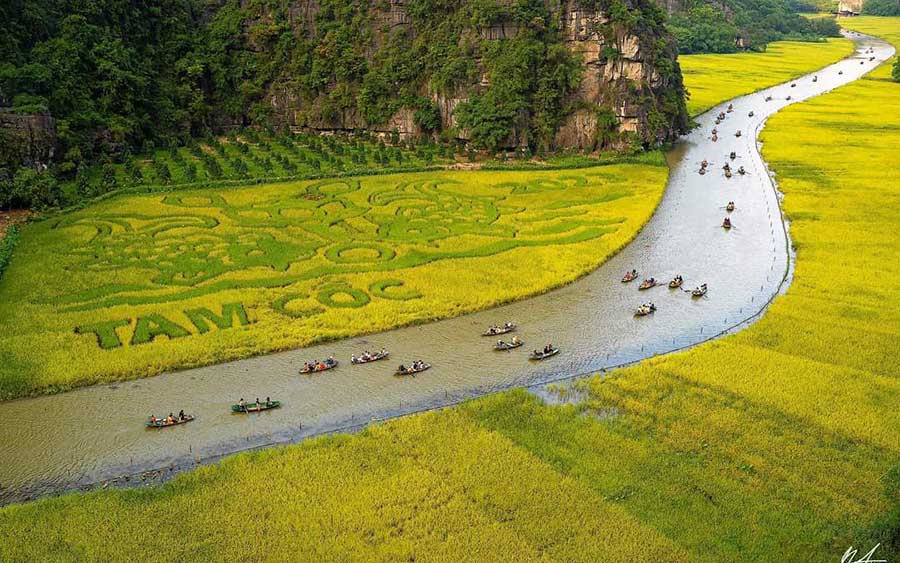
Tam Coc boating along with rice paddies
The Red River Delta, Vietnam’s second-largest flatland region, boasts expansive plains and fertile soil crisscrossed by major rivers. Within this picturesque landscape, you will find iconic rice fields in areas like Tam Coc (Ninh Binh) and Bac Son Valley (Lang Son).
Bac Son Valley is renowned for its undulating rice fields that intertwine and form a visually captivating panorama. On the other hand, Ninh Binh’s famous rice fields that are nestled near the iconic Tam Coc boating route craft a poetic landscape akin to a painted masterpiece.
Central Vietnam
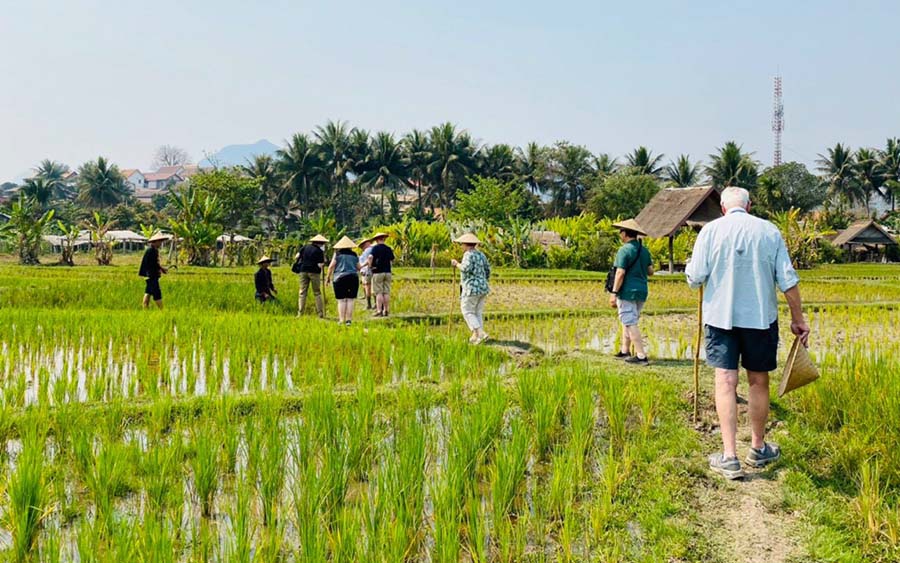
One day a farmer in Hoi An rice field
The most prominent rice fields in Central Vietnam are found in Hoi An. The city is worldwide known for its vibrant ancient town and an eco-friendly atmosphere that provides travelers with the utmost comfort and tranquility.
Travelers exploring this destination frequently integrate their visit with hands-on experiences of Vietnamese rural life, engaging in activities like gardening, watering plants, fishing, cooking, etc.
Mekong Delta
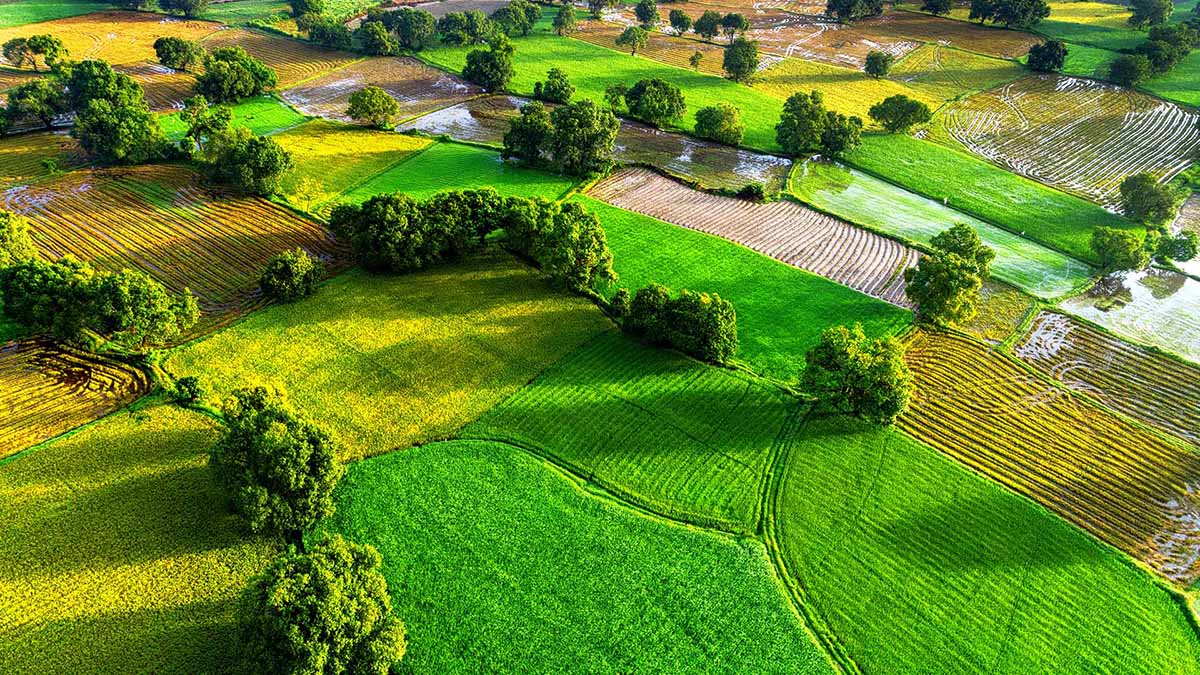
Rice field in Mekong Delta
The Mekong Delta is the largest rice granary in Vietnam. It is characterized by a vast and fertile network of sediment-laden rivers. Can Tho, An Giang, Dong Thap, Long An, and Ben Tre are home to the most abundant rice fields in the area.
Travelers exploring the Mekong Delta can combine visits to rice fields with boat tours to visit islands and explore local village life with vegetable and fruit gardens tended by the residents.
The best time to visit rice fields in Vietnam
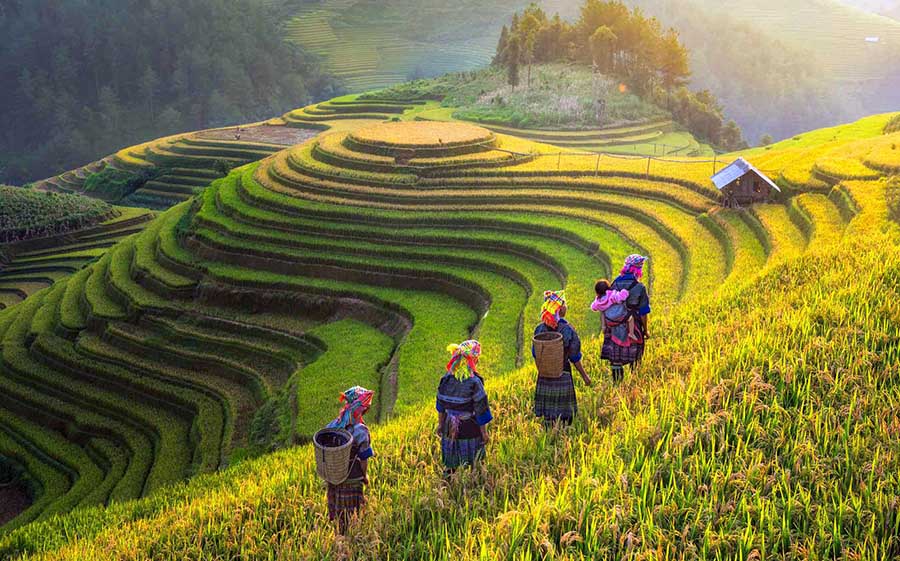
Rice fields in Vietnam seasons
In Vietnam, the ideal time to witness the enchanting beauty of rice fields is during the harvest season, typically occurring from September to October. The latter part of this period is when Vietnamese farmers harvest the ripened rice.
On the other hand, the rice season in Tam Coc (Ninh Binh) and Hoi An unfolds during the months of May to June. Bac Son Valley showcases its vibrant rice fields during the two periods of May to June and August to October.
If you want to capture the vibrant greenery, you can plan your visit for about one to two months before the rice ripening season.
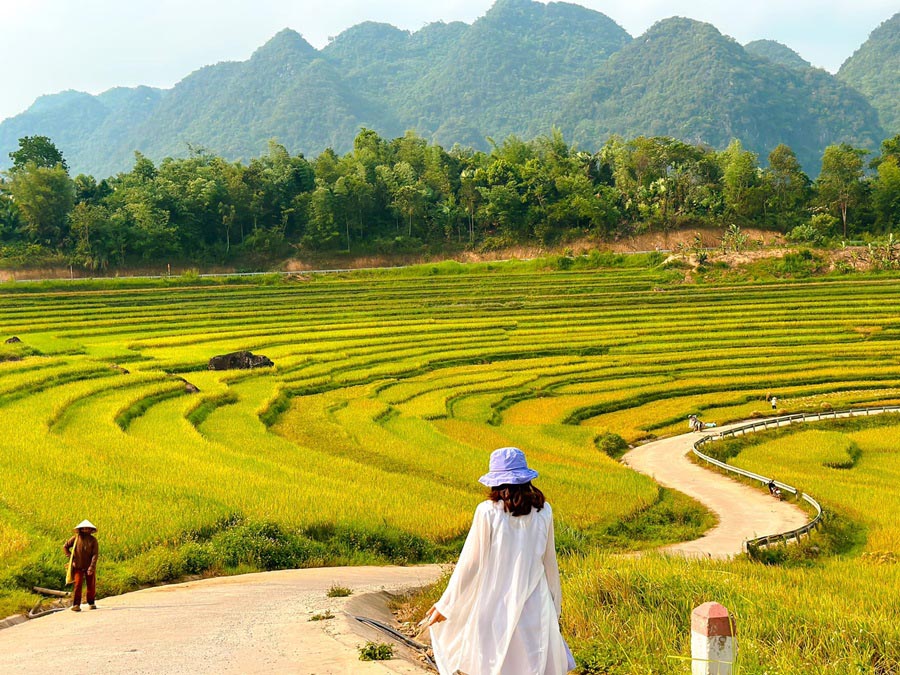
Rice paddies in Vietnam travel guide
Want to explore further? Check out our post about travel guide to Vietnam!
Aside from the beaches and urban hubs, spending time amidst paddies is also a fascinating signature experience. If you want to visit and try hands-on activities in the Vietnam rice fields, simply drop us a message at New Asia Tours. Our team will swiftly get in touch and provide you with the best deals and customer-centric support.



